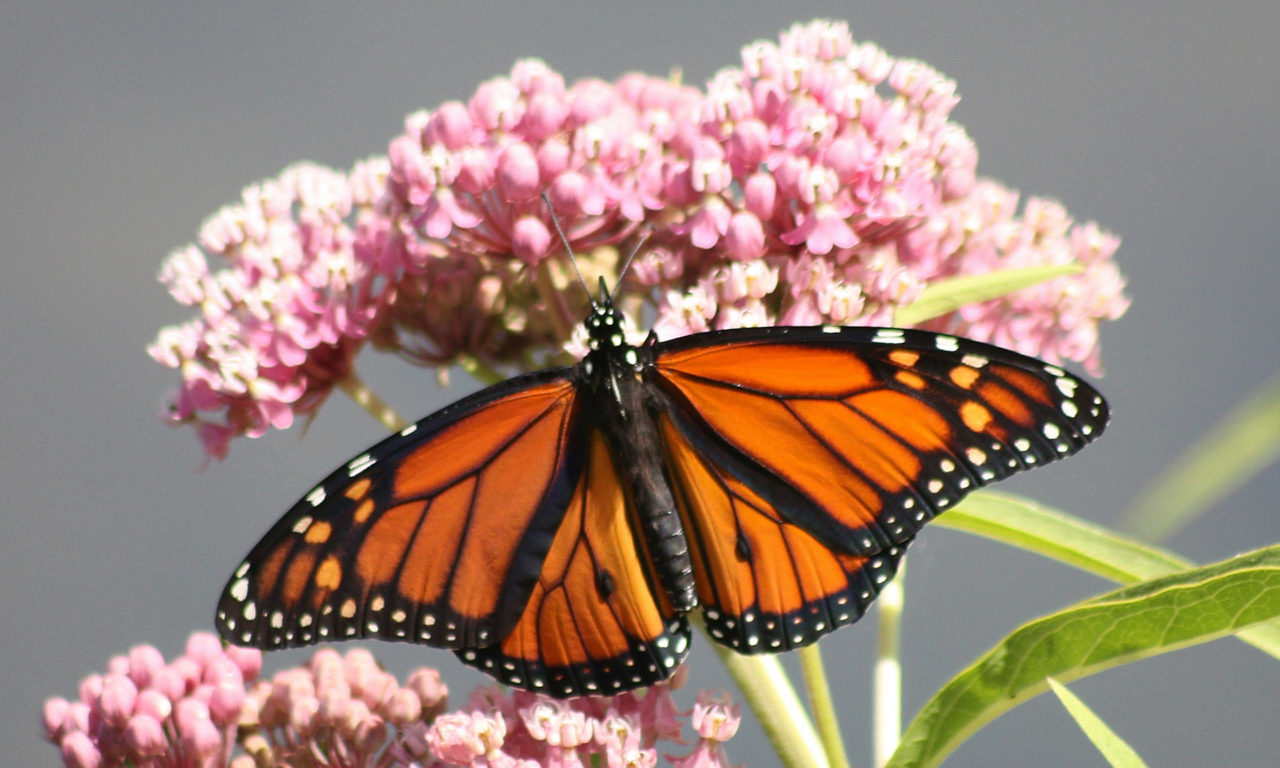Butterflies, which are summer visitors to Boulder County, may hibernate in the cold, never to awaken. These butterflies come from as far away as the Rio Grande and Mexico. However, if a butterfly can hide and keep its scales dry, it will awaken and continue to live, even though it has endured freezing temperatures. Its blood is not water-based, but hemolymph, made of ‘antifreeze’ glycerol, amino acids, and lipids.
Our famous Monarch butterflies migrate in September from Colorado to Mexico. Some may have begun their great journey from Canada in late August. They stop in trees for overnight rests or in blossoms for nectar-energy during their final long flight. Monarchs may catch a blast from the northwesterly wind to assist on their journey before the snow.
Mourning cloaks find hiding places. Cloaks have a pheromone that communicates this ‘grouping instinct’ in late autumn. These cloaks have been seen coming from under loose bark of aging cottonwoods a dozen at a time during the end of winter when warm sunlight hits the tree trunk. They will emerge for a day only to be seen by kestrel hawks waiting on nearby branches to snap up early morsels.
Some immigrant butterflies come from far-away southern deserts, prairies, and grasslands. These butterflies will live out their lives in Boulder and end up as nourishment for birds and spiders.
The thumbnail-sized dainty sulphur has greenish-colored wings, apparent to our eyes, but formed from black scales over the yellow wing background. It arrives in late summer along with the Reakirt’s blue.
Survival is the important factor in the lives of insects. Migration is one answer, and the other is maintaining the next generation by laying eggs in their home communities.
Accepting Small Grant Proposals for 2022
Each year, Boulder County Parks & Open Space awards small grants (up to $10,000 each) for research and biological inventories on Boulder County open space lands. These research projects and inventories provide valuable data to monitor management practices and improve resources and park visitor experiences. The department has identified 16 priority needs; the following are four of them.
- Analyze the effects of riparian cattle exclosures on groundwater depth, hydric soils, and carbon sequestration along a Front Range stream.
- Assess Sceloporus undulatus delimitations at open space sites, with additional emphasis on throat patch coloration expression within populations.
- Review existing models that predict fire behavior and effect to further refi ne modeled outputs for future treatments and expectations on open space areas.
- Research in further depth the 11 paleontological site localities recently located and recorded on a cluster of open space properties in the southeast grasslands.
The deadline for proposals is Monday, Jan. 10, 2022. Research proposal requirements, priority research topics, and past research project reports can be found at BoulderCountyOpenSpace.org/research.


